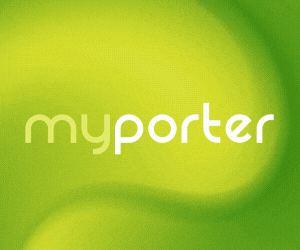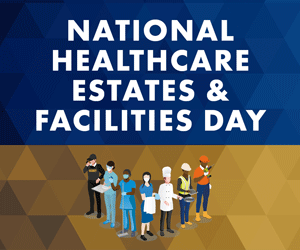Patient entertainment systems have moved on from their original remit, which was to give patients access to TV and telephone services at the bedside. Today’s systems are capable of offering a far greater selection of bedside technologies and are recognised as contributing to the overall patient experience and recovery process.
“The benefits of bedside communications are a must in the modern age,” agree Parity Medical’s Steve Wood and Airwave Healthcare’s Jes Redgard.
Parity Medical is a UK-based manufacturer and developer which provides a range of specialist healthcare technologies, including patient entertainment systems, to healthcare providers predominantly across the UK and Ireland. Its solutions span from basic TV only through to sophisticated systems that can integrate with clinical systems, by far the most popular of which is the touch screenCompanionWave Bedside System.
There is no doubt about the importance of technology, or the extent of its daily usage in this modern world. Mobile phones are commonplace. Patients from pre-school age to middle age now use electronic games, apps, email, the internet and social media frequently in their daily lives. The largest demographic group of patients - the elderly - may not be so keen on these technologies, but they will use TV and radio regularly in their everyday routines.
Research studies have shown that if patients are able to communicate with friends and family, have access to entertainment services and information about their condition, it not only improves the patient experience but also helps them to recover more quickly. This improves patient outcomes and increases the hospital’s capacity to treat more patients.
Airwave is a leading supplier, installer and integrator of digital television and audio visual equipment and has a dedicated healthcare range including TV, bespoke mountings, accessories and touch screens, backed up with a wide range of content, from TV channels to hospital information.
Airwave agrees that patient entertainment systems are essential in modern healthcare and adds that converging technologies are now contributing to greater efficiencies and higher patient satisfaction.
A home-from-home experience is now all the more important, says Airwave, with patients expecting at least Freeview TV at their bedside. Smart TV is becoming commonplace in private healthcare facilities with the NHS heading increasingly in that direction too. A reliable TV service with additional features helps contribute to greater patient satisfaction and can improve hospital efficiencies saving precious staff time and reducing costs.
The approach of the private sector to the provision of patient entertainment systems throws up some conflicting requirements. Parity Medical identifies a desire for private facilities to try to maintain an environment that more closely resembles a bedroom than a hospital room and for that reason, historically, many opted for more basic, TV only systems. However, technology is proving to be a force to be reckoned with and private facilities cannot ignore the benefits of providing enhanced, touch screen based systems.
Airwave points out that patients who are paying for their care expect a higher standard and describes private facilities as aiming to deliver a more hotel-like experience for patients. It has recently installed the world’s first Smart LED 32” TV with a built-in PC at the Spire Montefoire Hospital in Hove. This intuitive interface, based on a Windows platform, offers features such as movies on demand, instant messaging, internet access, and integration with the hospital’s HIS, PACS, and nurse call systems.
The expectations of patients within the NHS may not typically be as high and, of course, the NHS has to work within budgets, but Airwave always recommends hospitals future-proof, by installing the correct infrastructure at the beginning of a project.
Additional services can then be added in time, with available finance driving the choice of which.
Why invest?
Healthcare is an increasingly competitive sector and, for patients undergoing elective treatment, or in the private sector, the provision of a good patient entertainment system can be a significant factor influencing their choice of which facility to choose for their treatment.
If the entertainment system contributes to the well-being of the patient and aids the speed of recovery, there is also a tangible benefit to the hospital, enabling more patients to be treated, thus improving the hospital’s efficiency, easing pressure on waiting times and reducing costs.
Even so, finding the budget to invest is not always easy, therefore it may be desirable to choose a system that allows funds to be fed back into the hospital.
Included within Airwave’s expansive portfolio of solutions is the Philips MyChoice PAY TV solution, which gives hospitals the opportunity (and choice) for local revenue generation whilst providing an excellent entertainment experience for their patients. MyChoice gives patients the freedom of viewing premium content while allowing the hospital to generate revenue by selling PIN codes. This simple solution offers a number of different content packages to patients and is viewed on a dedicated Philips healthcare screen, which includes a number of features such as nurse call integration, and comes with an infection control wipe down remote control.
Parity Medical’s CompanionWave Bedside System gives the hospital the ability to decide how much to charge, if at all. This flexibility allows the facility to provide the bedside service at its own cost, to make a modest charge in order to break even or to increase the charge a little to create a profit centre if desired.
Both MyChoice and CompanionWave appeal to the Finance Director, with low unit and support costs.
Added functionality
An obvious feature for a modern bedside entertainment system, which will benefit both the nursing staff and patients, is for the system to integrate with the establishment’s nurse call. Airwave explains that this enables nurses to see when their patients require assistance from their nurse station rather than checking individual bays or rooms. Furthermore, this system can allow nurses to acknowledge and track the patient’s call for assistance from the nurse station, or an ‘app’, so the patient will see over their TV screen that a nurse is on the way.
Other applications can help patients communicate with the healthcare provider in a much more efficient way. For instance, patient surveys allow patients to provide feedback in an independent and meaningful way in line with obligations established by the Francis Report; on-screen menu ordering allows for huge efficiency savings by replacing archaic manual methods of collecting patient orders and gives dieticians the facility to manage dietary options for specific patients such as gluten-free only; bedside systems can be used to collect patient data which can then be automatically entered into their records and accessed electronically by a wide number of diverse clinicians which may have an interest in the patient, and bedside systems can be used to inform patients about their condition, options in their care pathway and pre-discharge information. All of these services are proven to help patients recover more quickly, more fully and reduce readmission rates.
Airwave’s AirMEDIA product, soon to be installed into Glasgow Children’s Hospital, allows patients to browse the web, access and complete patient feedback forms, view specific healthcare or well-being sites, and even interact with their own tablet or phone via the screen mirroring feature.
Want to upgrade?
Patient entertainment systems have been widely in use in healthcare since the early 2000s. In that period of time technology has progressed at a breathtaking rate. So just how easy - and how cost-effective - is it to upgrade these incumbent systems to a modern, all-singing all-dancing version?
This is becoming a frequently encountered scenario. The first step should be to conduct a site survey and assess what elements of the previous system can be retained and safely re-used in order to keep costs down.
In many cases existing cabling infrastructures can be retained, existing IPTV head-end equipment can be re-used or upgraded and in a number of cases it has even been possible to re-use wall mount back boxes (which avoids the need to drill into walls which can be disruptive) and even to re-use existing support arms.
Parity’s Steve Wood confirms: “In such instances we have been able to implement a brand new, fully featured CompanionWave system at a fraction of the cost of a fresh installation.”
For any new-build hospitals, wards or care homes Airwave says it can’t stress enough how crucial it is to future-proof themselves by installing all the necessary infrastructure at the head-end during the build process, allowing them to upgrade whenever they need to in the future.
For example installing both a coax and data network allows Freeview to be distributed over the coax, however, if the hospital decides it wants to deliver smart services at a later date, it can simply plug a Smart TV, or a Smart TV box in via the data network.
A Smart TV box is a simple way to turn healthcare TVs delivering Freeview into an entertainment hub including information pages, and a choice of over 250 apps, with games, catch-up services and custom-branding all available. Many new hospitals are designed with a data network infrastructure only wich drives the hospital to a IPTV based system with subsequent increased costs. However, according to Jes Redgard, Airwave has a solution for broadcasting standard rf signals over a data network without impacting bandwidth functionality or availability. Hospitals no longer need to rely on a ‘one size fits all’ offering and have a broad range of cost effective options open to them from a specialist systems integrator like Airwave.
It is clear that the role of the patient entertainment or bedside technology system today goes far beyond the purpose for which it was originally introduced into areas which many could not have predicted when the concept was first mooted. The developments in technology have not only broadened the scope of services these systems can deliver but have also opened up more options for covering their cost or even turning them into profit centres in their own right, whilst still providing a valuable service to patients.










